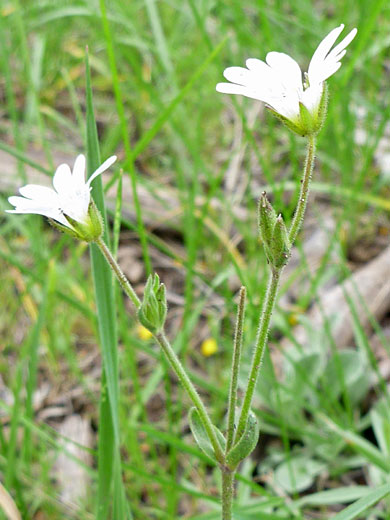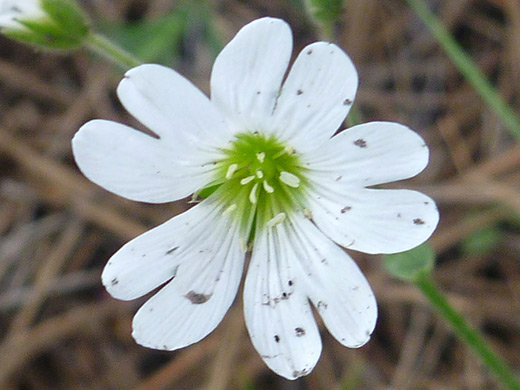Common names:
Field chickweed, meadow chickweed
Family:
Scientific name:
Cerastium arvense
Main flower color:
Range:
The Pacific states, east to the Rocky Mountain states, and the northern Great Plains
Height:
Up to 20 inches
Habitat:
Open plains and hillsides at a wide range of elevations
Leaves:
Opposite, lanceolate or narrowly oblong, up to 1.5 inches long
Season:
April to August
The slender stem of cerastium arvense splits a few times, each branch often terminating in an inch-wide flower formed of five white, obovate, lightly grooved petals, divided at the tip to about half their length and so giving the appearance of ten petals. Underneath are five shorter, pointed green sepals which, like the leaves and stem, have a covering of short hairs, often glandular. The flower center is green, containing ten short stamens and five styles.
Stems are quite weak, often curving back down to the ground. The narrow, greyish-green leaves have a prominent center vein. The plant inhabits a wide range of elevations, from near sea level to 12,500 foot mountains. This is a perennial species, and commonly produces some shoots with leaves but no flowers.
Stems are quite weak, often curving back down to the ground. The narrow, greyish-green leaves have a prominent center vein. The plant inhabits a wide range of elevations, from near sea level to 12,500 foot mountains. This is a perennial species, and commonly produces some shoots with leaves but no flowers.
All Contents © Copyright The American Southwest | Comments and Questions | Contribute | Site Map








